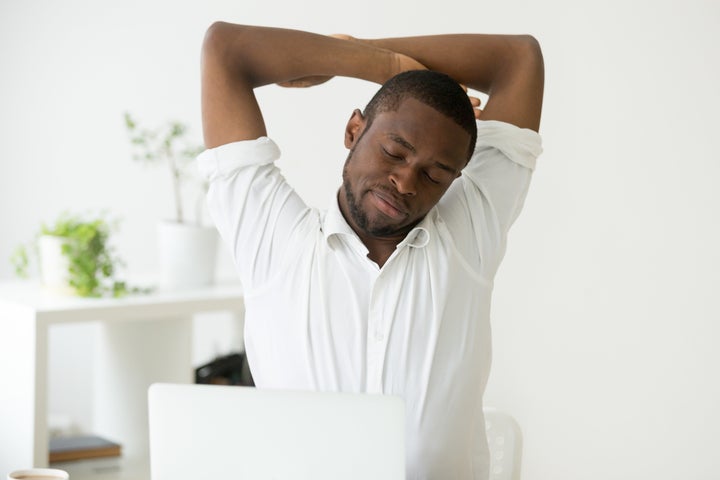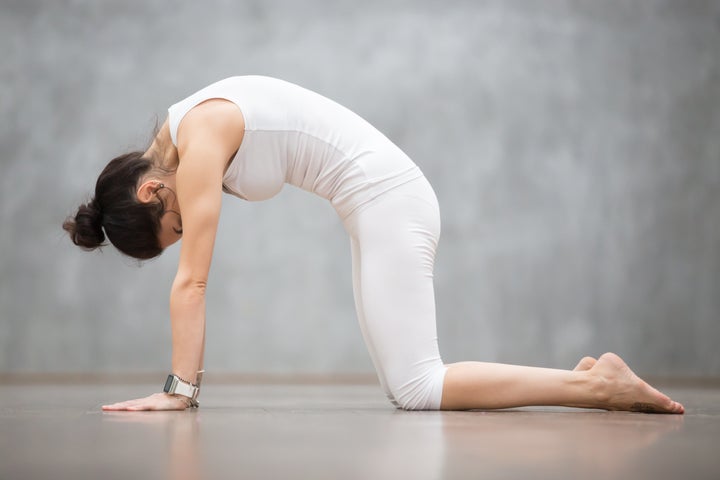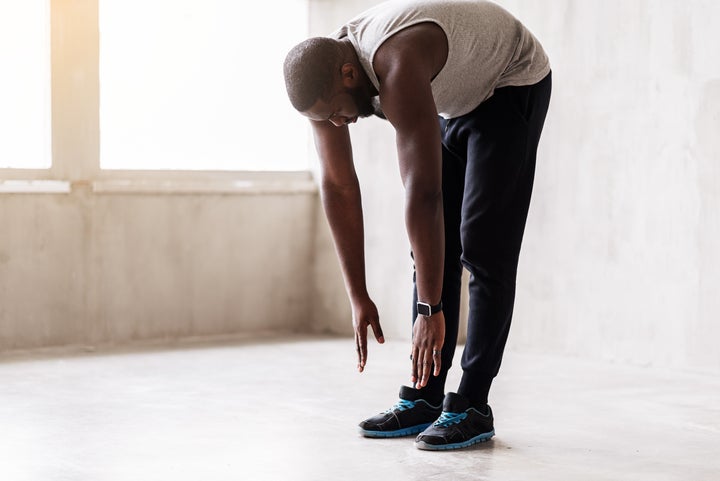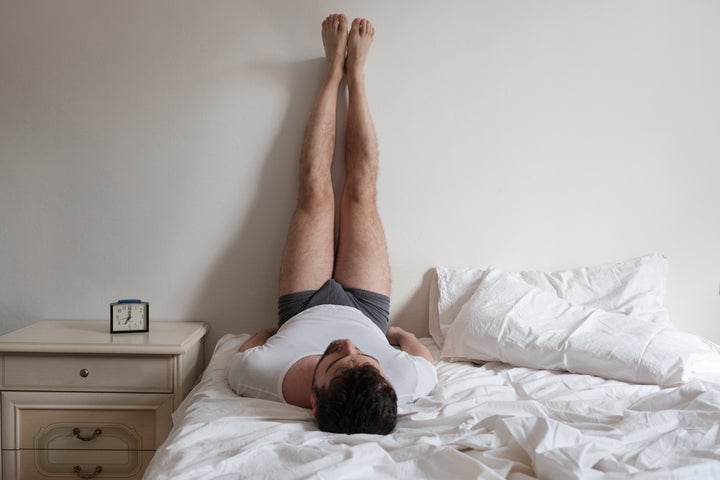Prince Charles has been singing the praises of yoga, suggesting it could save the NHS time and money if more people practised it.
It’s no secret yoga is good for our bodies – it can boost activity levels while improving strength, flexibility and balance. There’s even evidence it helps people with high blood pressure, heart disease, aches and pains (including lower back pain), depression and stress.
If you’re a complete beginner but interested in giving it a go, here are 13 ways you can work it into your everyday routine – no gym membership necessary.
[Read More: Why men need yoga more than ever]

Waking Up.
When you wake up, it’s not uncommon to feel stiff around the neck and shoulders. Yoga instructor Sarah Wivell recommends starting the day with the ‘cat and cow’ pose, which you can do on the floor by the side of your bed. “Come onto your hands and knees, put your knees hip-distance apart directly under your hips, and hands directly underneath the shoulders,” she says. (Basically, get on all fours.)
“On the inhale, push the pelvis back to lengthen the spine and lift the head to look up to the ceiling,” she explains. “Exhale, pull the tailbone in, round the shoulders like an angry cat and look towards your belly button.”
Repeat this five times, taking time to move as slowly as possible and matching your movement to your breath.

Yoga teacher Rosie Markwick, who runs The Deep Dive Retreat, recommends ‘standing mountain’ pose for a great early morning stretch. “Put your feet hip-distance apart and grounded on the floor,” she says. “Inhale and lift the arms above the head for a full body stretch. Hold the left wrist with your right hand and stretch to the left.” Hold this for three breaths and then do the other side, repeating as many times as necessary.
Next, try a forward fold where you keep your feet hip-distance apart, breathe in, then fold your body in half forwards towards the floor. “Keep the knees soft and the arms heavy,” Markwick advises. “It doesn’t matter if you don’t reach the floor.”
Try and hold this position for eight deep breaths to help wake up the hamstrings and soften the lower back – two areas that can be pretty tight after waking up.

Make the last stretch of the morning a downward facing dog. To do this, plant your hands on the floor, step your feet back and keep your bum in the air. “Your legs can straighten but it’s more important for your spine to straighten so bend the knees if you need to,” says Markwick. “Press the hands on the floor and tilt the hips to the ceiling, stay in this position and take some deep breaths.”
On Your Commute.
If you’ve managed to bag yourself a quiet carriage on the train or bus to work, or even in the back of a car, yoga instructor and Therapy Directory member Marianne Hayes says there are simple stretches to try while you’re sat down.
Make sure you sit without leaning on the back of the seat, with both feet flat on the floor and hip-width apart. “Start by mobilising the spine: push your chest forward, looking up as you inhale,” she explains. “As you exhale, round your back from the tailbone, tucking your chin in.” Do this five times before moving on.

Next, try a seated twist. “Hold the left side of the back of your seat with your right hand,” says Hayes. “Exhale and twist from the mid-back towards the left; holding for five breaths. Come back to the centre as you inhale and repeat on the other side.”
You could also do the arm stretch of Markwick’s standing mountain pose – just while sitting down.
At Work.
For those working in an office, sitting down all day is far from ideal. Markwick recommends stretches that work the hips, lower back, shoulders and wrists.
Try the seated pigeon pose (on a chair): “Push back from your desk slightly and make sure your legs are hip-distance apart. Then, cross your left ankle just above your right knee, keeping your left foot stretched. Either stay here if the stretch is already strong or slowly ease your left knee towards the ground and lean your upper body forwards and down.”
If you have stiff wrists, stretch the whole right arm and hand forwards, she advises. Keep the palm stretched and then, using the left hand, stretch each finger back slightly (one at a time).
Lastly, try a standing shoulder opener – which you’ll need to find a flat wall for. Place both hands on a flat wall and, with straight arms, step your feet back so your body is in an ‘L’ shape. Ideally both legs and your back should be straight. “Press your hands into the wall and let your head hang heavily between your arms,” says Markwick. “It’s an amazing and really simple stretch to release your upper back, shoulders and neck.” Try to hold this for 10 deep breaths at least.
Going To Bed.
Wivell recommends putting your legs up against a wall before bedtime, as it relaxes the body, preparing it for rest. “Scooch the side of your body right up against the wall and then turn so your legs are resting upwards,” she advises. “For extra comfort, place a blanket beneath the hips or the head.”
Relax here for eight minutes, she says, focusing on a deep, smooth inhale and exhale.

If you’re ready to get into bed, lay down and try a ‘reclining twist’. “Bring your knees to your chest,” says Markwick, “then drop both knees to the right and let both of your arms open out into a T shape.” Repeat by dropping both knees to the left.
And lastly, move into ‘butterfly’ pose. Place the soles of your feet together with your knees apart, so your legs are in a diamond shape, and hold this for a couple of minutes.
Before long, you’ll be drifting off to sleep.